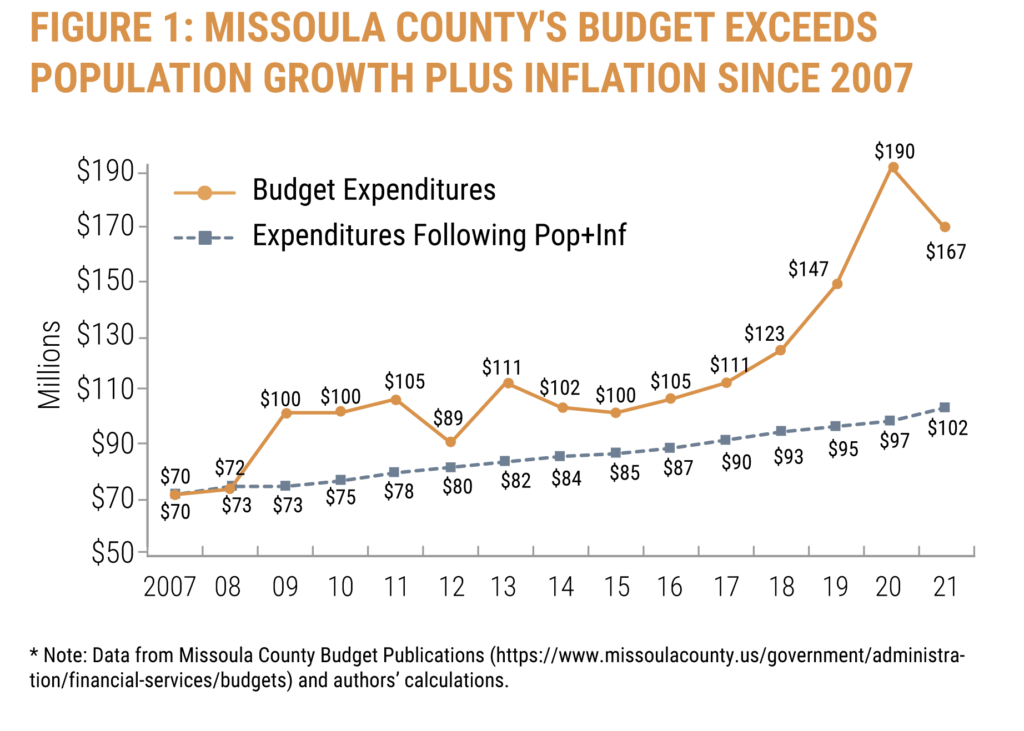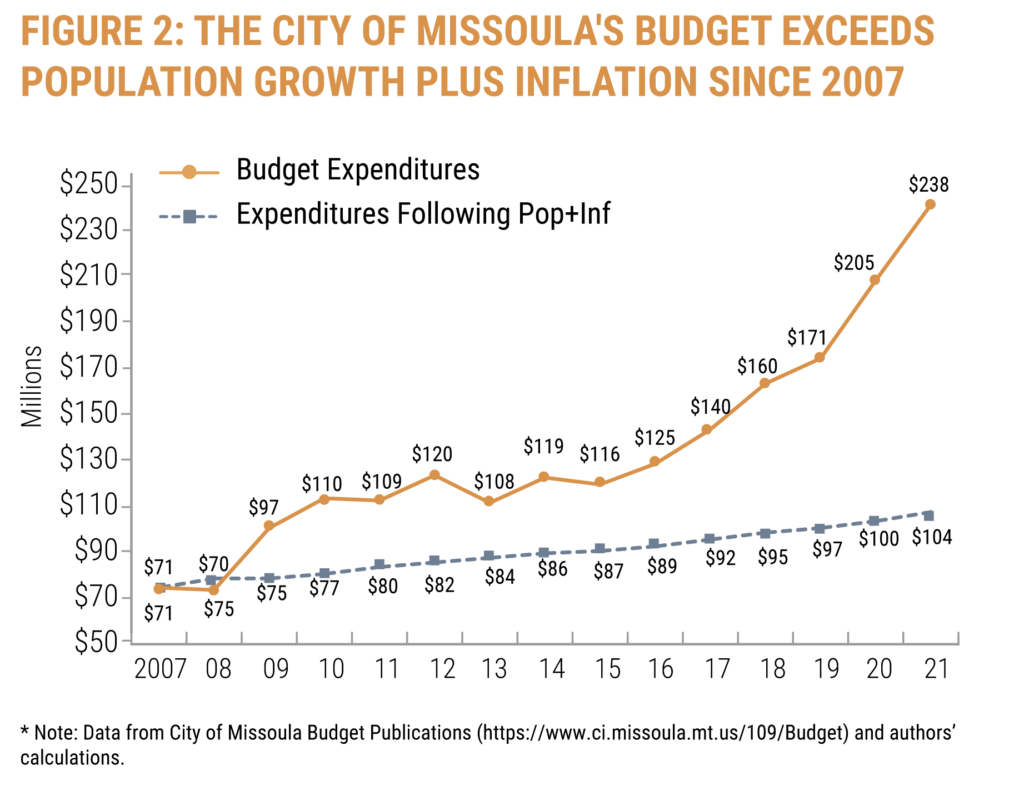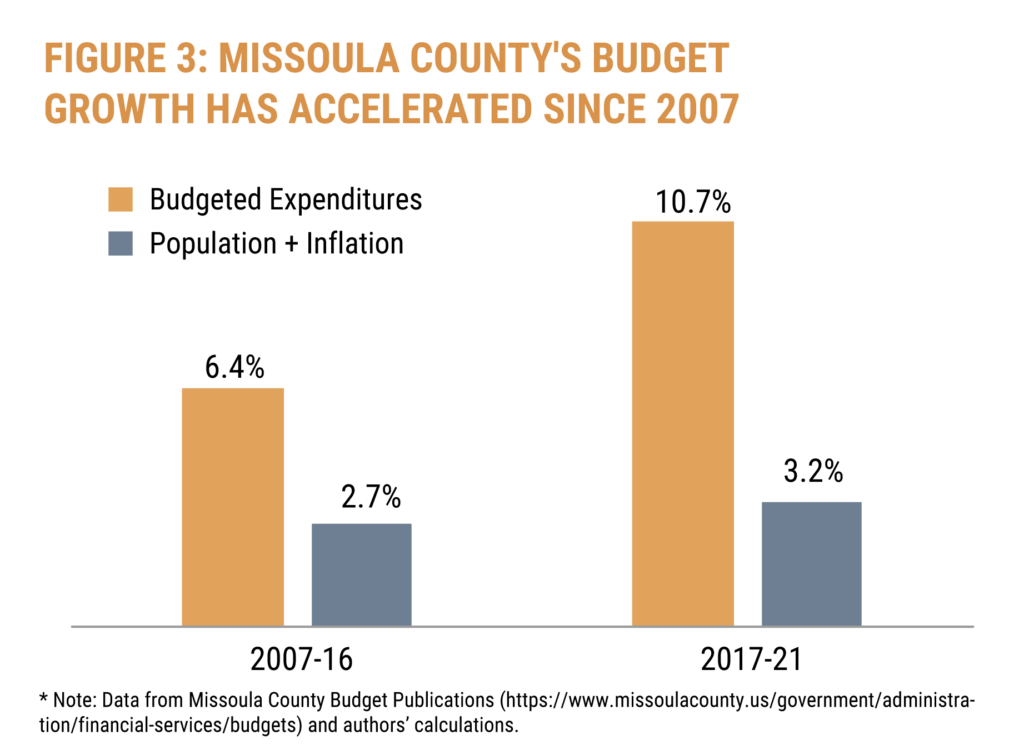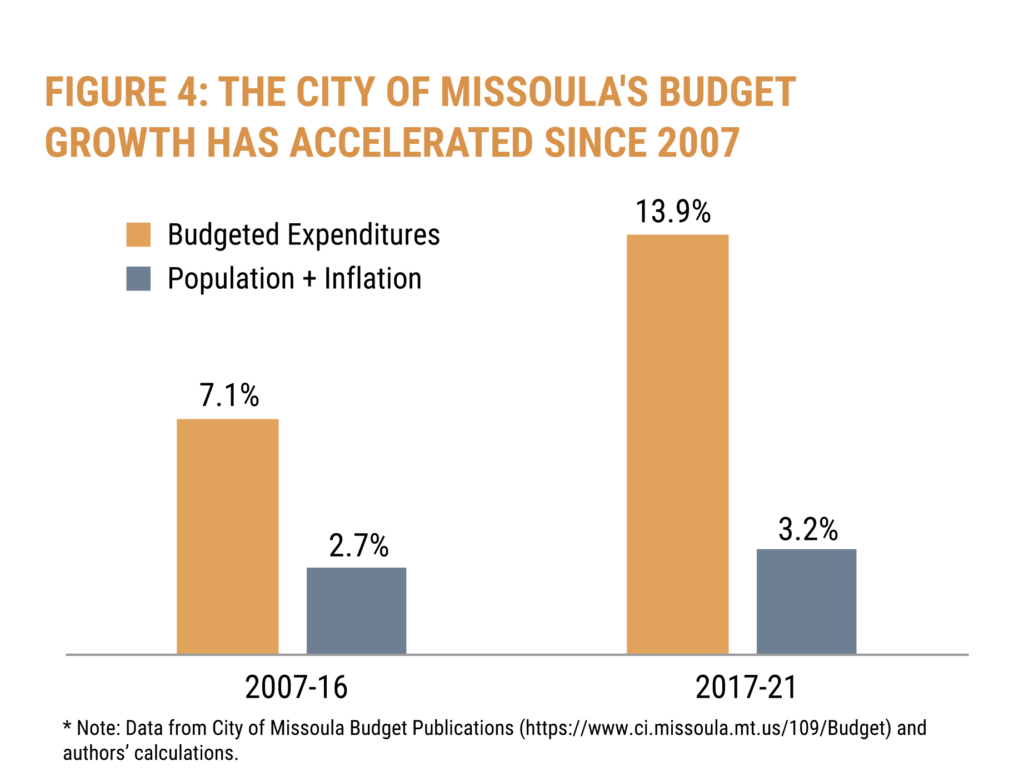Key points:
- Over the last 15 years, Missoula’s spending has increased faster than the pace of population growth plus inflation, at the excessive cost of $198 million to Missoula taxpayers in 2021.
- The Real Missoula Budget demonstrates the need for government spending restraint and an improved budget process to protect Missoula taxpayers.
- Missoula officials should focus on holding the growth of expenditures to less than population growth plus inflation to ensure that the cost of government stays within the bounds of taxpayers’ ability to pay for it.
The Need for Fiscal Spending Limits
The growth of the economy, as measured by Montana’s population growth plus inflation, provides a measuring stick for fiscal responsibility by accounting for potential changes in economic conditions indicating the demand for government services and the cost of providing them. This benchmark also helps account for more people and higher wages, which, combined, provide resources for taxpayers’ ability to pay to fund government expenditures.1
Montana leaders have pointed to the growth of population growth plus inflation as the fairest measure for government growth.2
The Real Missoula Budget
Frontier Institute partnered with leading economists at the Texas Public Policy Foundation to put together an analysis of Missoula’s budget compared to the metric of population growth plus inflation over the last 15 years.
Figures 1 and 2 show how Missoulians are footing the bill for a combined $198 million more in spending during FY 2021 than if Missoula’s city and county government had increased their budgets each period since 2007 by this key metric.
Missoula’s Budget Exceeds Population Growth Plus Inflation
Since 2007, Missoula County’s budget has grown 64% faster than the growth of the economy as measured by population growth plus inflation:

Since 2007, the City of Missoula’s budget has grown 128% faster than the growth of the economy, as measured by population growth plus inflation:

Figures 3 and 4 show that the average annual budget growth has accelerated considerably over the last five years compared to the preceding ten years.
Missoula County’s average annual budget growth has increased faster since 2015:

The City of Missoula’s average annual budget growth has increased faster since 2015:

Excessive Spending Burdens Taxpayers
Montana’s Constitution requires that all local governments balance their budgets. Missoula’s county and city budgets are paid for primarily by taxpayers through a combination of fees, assessments, and property taxation.3 Excessive spending that grows beyond the rate of economic growth, as measured by population growth plus inflation, requires governments to raise additional revenues resulting in a higher tax burden.
Conclusion
Missoula’s budget has grown faster than Missoulians’ ability to pay for it over the last 15 years. Limiting Missoula’s budget growth, and even reducing it as many families have done with their budgets during the COVID-19 pandemic, will give Missoulians more opportunities to flourish. Missoula officials should focus on holding the growth of budgeted expenditures to less than population growth plus inflation to ensure that the cost of government stays within the bounds of taxpayers’ ability to pay for it.



